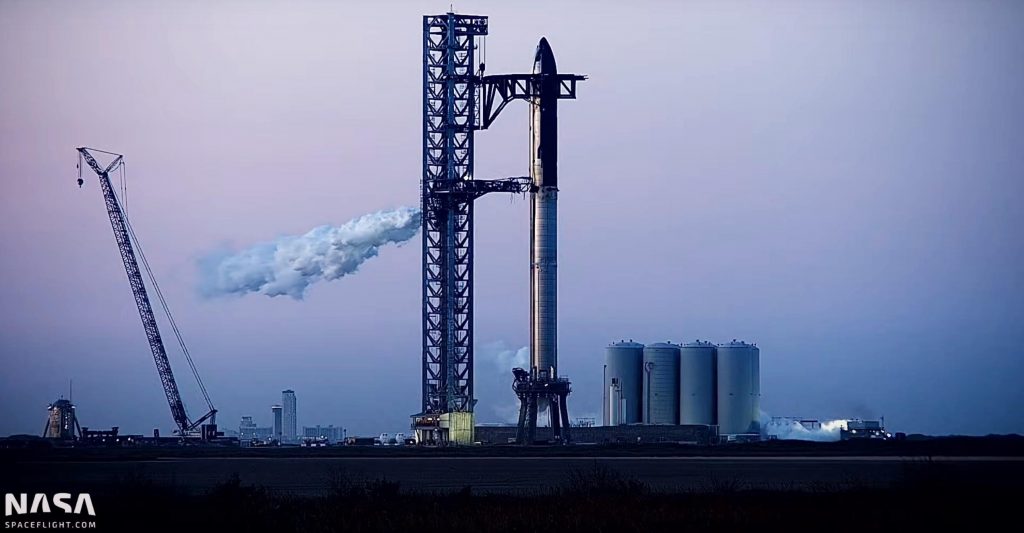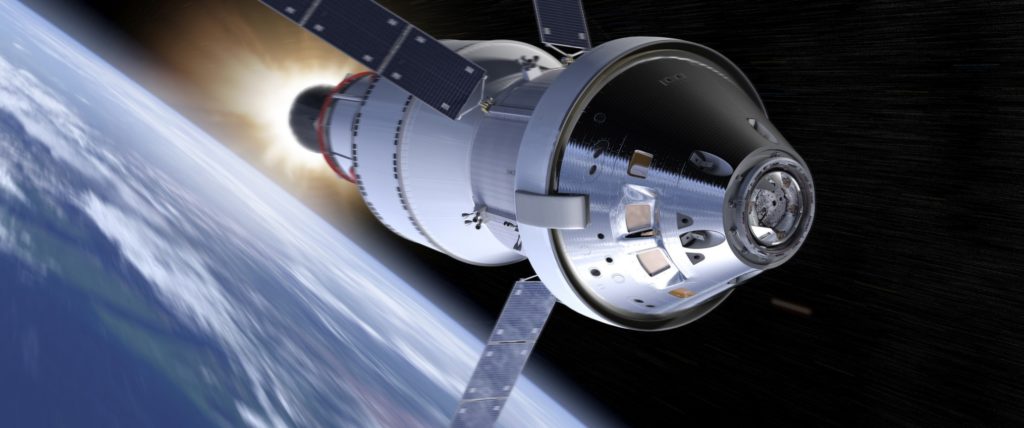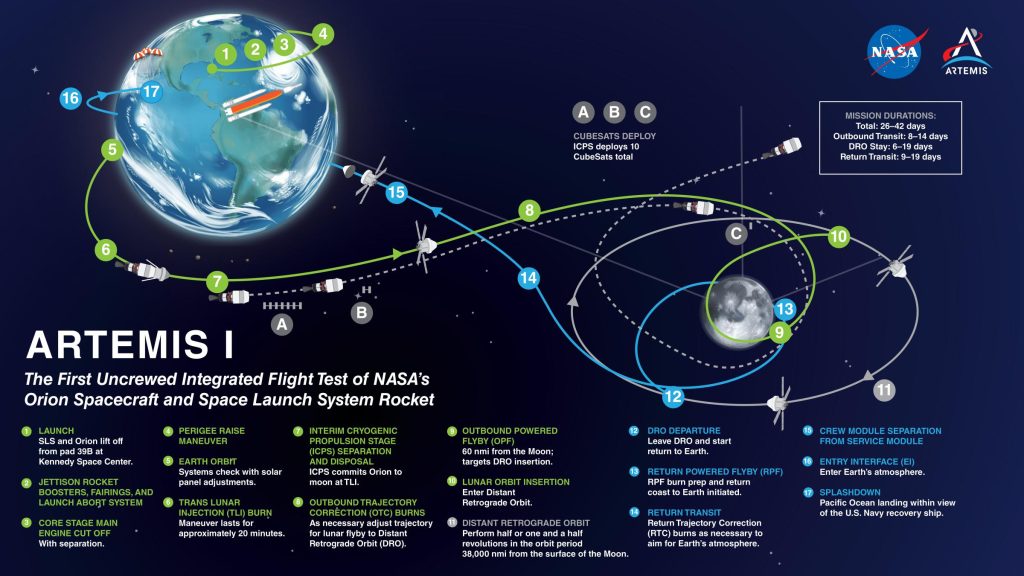

News
NASA to roll SLS Moon rocket to the launch pad two days early
NASA has given the go-ahead to roll its Space Launch System (SLS) Moon rocket to the launch pad two days ahead of schedule.
That bodes well for plans to launch the rocket for the first time (a milestone NASA originally hoped to pass in December 2016) as early as late August or September 2022. NASA says that its first SLS rocket is now on track to begin a roughly 24-hour journey to Kennedy Space Center’s LC-39B launch pad at 9 pm EDT on August 16th. That will kick off approximately two more weeks of work that could finally culminate in the rocket’s first real launch attempt as early as August 29th, a moment anywhere from 12 to 16 years in the making.
SLS was created by Congress in 2010 when the legislative body drafted a law demanding that NASA develop a heavy-lift rocket to replace the Space Shuttle. In practice, Congress (particularly several key stakeholders with former Shuttle workforce and facilities in their states or districts) was primarily interested in keeping former Shuttle infrastructure active and workers employed, and left NASA to figure out how to retroactively engineer a rocket out of a list of legal requirements mostly driven by politics.
NASA ultimately devised a rocket that would extrapolate Shuttle external tank technology into a larger liquid hydrogen/oxygen ‘core stage’ powered by four flight-proven, reusable Space Shuttle Main Engines (SSME; now RS-25). A relatively small orbital upper stage derived from Boeing’s Delta IV rocket would sit atop the core stage, which would be augmented with two stretched Shuttle-derived solid rocket boosters (SRBs). Altogether, the first variant of SLS – Block 1 – is expected to be able to launch up to 95 tons (~210,000 lb) to low Earth orbit and around 27 tons (~59,500 lb) to the Moon, 32% and 38% worse than the Saturn V rocket NASA abandoned for the Space Shuttle in the 1970s.


Nevertheless, SLS will likely become the most powerful rocket currently in operation if it successfully debuts within the next few months. Only SpaceX’s Starship, which will eventually launch a Starship-derived Moon lander for NASA, is likely to challenge or beat the performance of SLS within the next 5-10 years.
However, after more than half a decade of delays and around $25 billion spent without a single launch to show for its investment, NASA no longer has any near-term plans to use SLS for more than sending a few astronauts on their way to the Moon once every year or two. The only tangible payload currently assigned to SLS Block 1 is NASA’s own Orion spacecraft, an earlier version of which Lockheed Martin began developing for NASA in 2006. Approximately 16 years and $25 billion later, the Orion capsule will be better than the Apollo Program’s Command module (capsule) by most measures, but its service (propulsion) module will be far worse.

With about half as much usable delta V (propulsive capability) as the Apollo CSM, Orion is incapable of transporting astronauts to the same convenient low lunar orbits that the Apollo Program used, forcing NASA to send it to high, exotic alternatives. As a result, NASA has been forced to create a multi-billion-dollar destination for Orion (the Gateway station) and complicate the mission of new Moon landers like SpaceX’s Starship.
Countless pitfalls and shortcomings aside, NASA is about to finally roll the fourth most capable flightworthy rocket ever assembled (behind Saturn V, N-1, and Energia) to the launch pad. Regardless of the outcome of the mission, SLS will likely be the fifth largest rocket (including the Space Shuttle) ever launched when it lifts off. If that launch is successful, the achievement will be even more impressive, marking the third time out of three attempts that NASA has successfully launched a super heavy-lift launch vehicle (>50t to LEO) on its first try.

A successful Artemis I launch would also give the Orion spacecraft an opportunity to enter orbit around the Moon and test most of the systems it will need for Artemis II, which is intended to carry two astronauts. Orion won’t carry or test any life support or docking systems, making it only a partial demonstration, but it will still be the first time a prototype of a crewed spacecraft has attempted to enter lunar orbit since December 1972.

Elon Musk
Elon Musk and Tesla AI Director share insights after empty driver seat Robotaxi rides
The executives’ unoccupied tests hint at the rapid progress of Tesla’s unsupervised Robotaxi efforts.

Tesla CEO Elon Musk and AI Director Ashok Elluswamy celebrated Christmas Eve by sharing personal experiences with Robotaxi vehicles that had no safety monitor or occupant in the driver’s seat. Musk described the system’s “perfect driving” around Austin, while Elluswamy posted video from the back seat, calling it “an amazing experience.”
The executives’ unoccupied tests hint at the rapid progress of Tesla’s unsupervised Robotaxi efforts.
Elon and Ashok’s firsthand Robotaxi insights
Prior to Musk and the Tesla AI Director’s posts, sightings of unmanned Teslas navigating public roads were widely shared on social media. One such vehicle was spotted in Austin, Texas, which Elon Musk acknowleged by stating that “Testing is underway with no occupants in the car.”
Based on his Christmas Eve post, Musk seemed to have tested an unmanned Tesla himself. “A Tesla with no safety monitor in the car and me sitting in the passenger seat took me all around Austin on Sunday with perfect driving,” Musk wrote in his post.
Elluswamy responded with a 2-minute video showing himself in the rear of an unmanned Tesla. The video featured the vehicle’s empty front seats, as well as its smooth handling through real-world traffic. He captioned his video with the words, “It’s an amazing experience!”
Towards Unsupervised operations
During an xAI Hackathon earlier this month, Elon Musk mentioned that Tesla owed be removing Safety Monitors from its Robotaxis in Austin in just three weeks. “Unsupervised is pretty much solved at this point. So there will be Tesla Robotaxis operating in Austin with no one in them. Not even anyone in the passenger seat in about three weeks,” he said. Musk echoed similar estimates at the 2025 Annual Shareholder Meeting and the Q3 2025 earnings call.
Considering the insights that were posted Musk and Elluswamy, it does appear that Tesla is working hard towards operating its Robotaxis with no safety monitors. This is quite impressive considering that the service was launched just earlier this year.
Elon Musk
Starlink passes 9 million active customers just weeks after hitting 8 million
The milestone highlights the accelerating growth of Starlink, which has now been adding over 20,000 new users per day.

SpaceX’s Starlink satellite internet service has continued its rapid global expansion, surpassing 9 million active customers just weeks after crossing the 8 million mark.
The milestone highlights the accelerating growth of Starlink, which has now been adding over 20,000 new users per day.
9 million customers
In a post on X, SpaceX stated that Starlink now serves over 9 million active users across 155 countries, territories, and markets. The company reached 8 million customers in early November, meaning it added roughly 1 million subscribers in under seven weeks, or about 21,275 new users on average per day.
“Starlink is connecting more than 9M active customers with high-speed internet across 155 countries, territories, and many other markets,” Starlink wrote in a post on its official X account. SpaceX President Gwynne Shotwell also celebrated the milestone on X. “A huge thank you to all of our customers and congrats to the Starlink team for such an incredible product,” she wrote.
That growth rate reflects both rising demand for broadband in underserved regions and Starlink’s expanding satellite constellation, which now includes more than 9,000 low-Earth-orbit satellites designed to deliver high-speed, low-latency internet worldwide.
Starlink’s momentum
Starlink’s momentum has been building up. SpaceX reported 4.6 million Starlink customers in December 2024, followed by 7 million by August 2025, and 8 million customers in November. Independent data also suggests Starlink usage is rising sharply, with Cloudflare reporting that global web traffic from Starlink users more than doubled in 2025, as noted in an Insider report.
Starlink’s momentum is increasingly tied to SpaceX’s broader financial outlook. Elon Musk has said the satellite network is “by far” the company’s largest revenue driver, and reports suggest SpaceX may be positioning itself for an initial public offering as soon as next year, with valuations estimated as high as $1.5 trillion. Musk has also suggested in the past that Starlink could have its own IPO in the future.
News
NVIDIA Director of Robotics: Tesla FSD v14 is the first AI to pass the “Physical Turing Test”
After testing FSD v14, Fan stated that his experience with FSD felt magical at first, but it soon started to feel like a routine.

NVIDIA Director of Robotics Jim Fan has praised Tesla’s Full Self-Driving (Supervised) v14 as the first AI to pass what he described as a “Physical Turing Test.”
After testing FSD v14, Fan stated that his experience with FSD felt magical at first, but it soon started to feel like a routine. And just like smartphones today, removing it now would “actively hurt.”
Jim Fan’s hands-on FSD v14 impressions
Fan, a leading researcher in embodied AI who is currently solving Physical AI at NVIDIA and spearheading the company’s Project GR00T initiative, noted that he actually was late to the Tesla game. He was, however, one of the first to try out FSD v14.
“I was very late to own a Tesla but among the earliest to try out FSD v14. It’s perhaps the first time I experience an AI that passes the Physical Turing Test: after a long day at work, you press a button, lay back, and couldn’t tell if a neural net or a human drove you home,” Fan wrote in a post on X.
Fan added: “Despite knowing exactly how robot learning works, I still find it magical watching the steering wheel turn by itself. First it feels surreal, next it becomes routine. Then, like the smartphone, taking it away actively hurts. This is how humanity gets rewired and glued to god-like technologies.”
The Physical Turing Test
The original Turing Test was conceived by Alan Turing in 1950, and it was aimed at determining if a machine could exhibit behavior that is equivalent to or indistinguishable from a human. By focusing on text-based conversations, the original Turing Test set a high bar for natural language processing and machine learning.
This test has been passed by today’s large language models. However, the capability to converse in a humanlike manner is a completely different challenge from performing real-world problem-solving or physical interactions. Thus, Fan introduced the Physical Turing Test, which challenges AI systems to demonstrate intelligence through physical actions.
Based on Fan’s comments, Tesla has demonstrated these intelligent physical actions with FSD v14. Elon Musk agreed with the NVIDIA executive, stating in a post on X that with FSD v14, “you can sense the sentience maturing.” Musk also praised Tesla AI, calling it the best “real-world AI” today.








